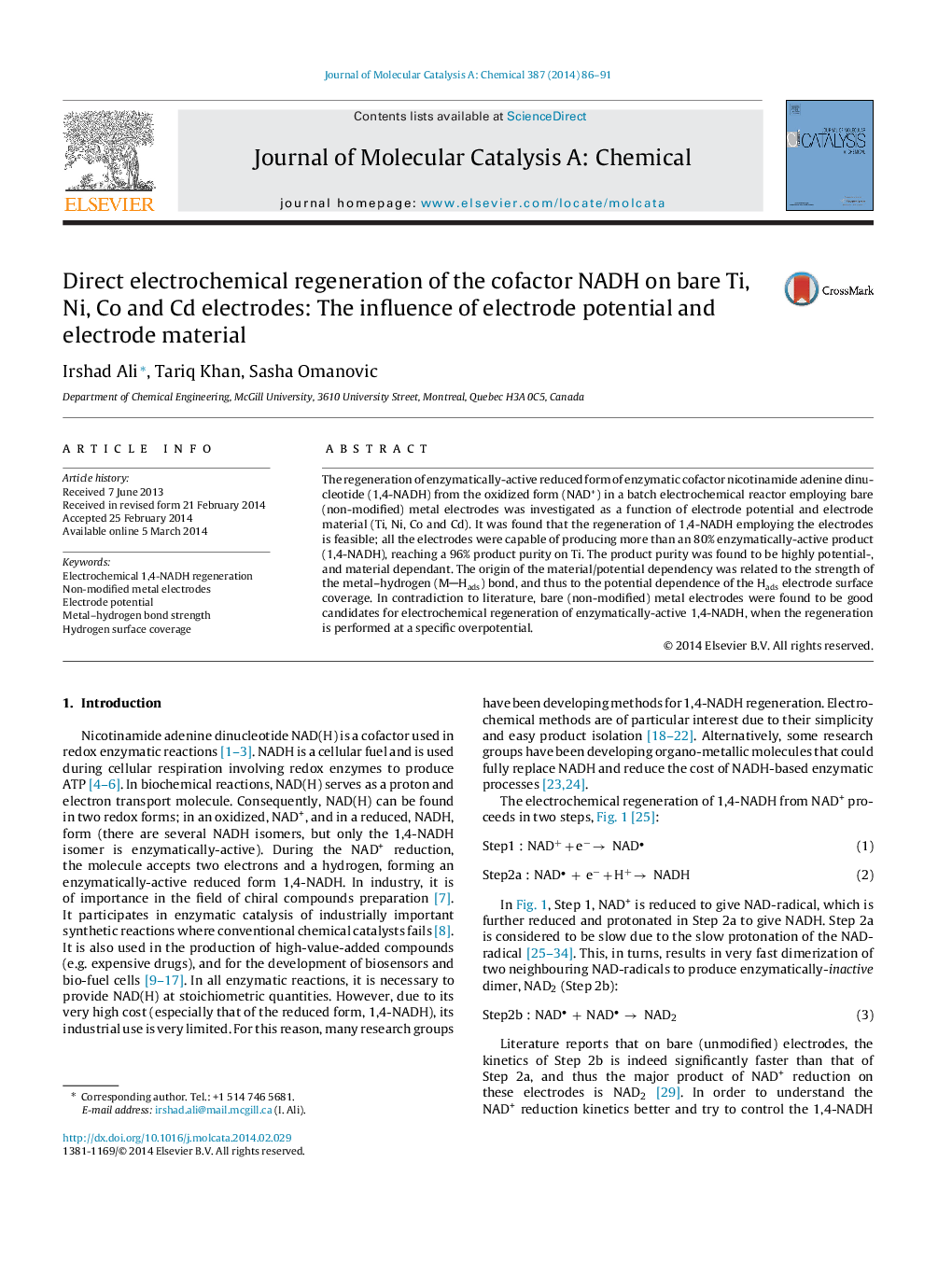| Article ID | Journal | Published Year | Pages | File Type |
|---|---|---|---|---|
| 65451 | Journal of Molecular Catalysis A: Chemical | 2014 | 6 Pages |
•Electrochemical regeneration of 1,4-NADH from NAD+ was performed.•Non-modified Ti, Ni, Co and Cd working electrodes were used.•Metal–hydrogen bond strength was found to influence the purity of the product.•Up to a 96% product purity was achieved.
The regeneration of enzymatically-active reduced form of enzymatic cofactor nicotinamide adenine dinucleotide (1,4-NADH) from the oxidized form (NAD+) in a batch electrochemical reactor employing bare (non-modified) metal electrodes was investigated as a function of electrode potential and electrode material (Ti, Ni, Co and Cd). It was found that the regeneration of 1,4-NADH employing the electrodes is feasible; all the electrodes were capable of producing more than an 80% enzymatically-active product (1,4-NADH), reaching a 96% product purity on Ti. The product purity was found to be highly potential-, and material dependant. The origin of the material/potential dependency was related to the strength of the metal–hydrogen (MHads) bond, and thus to the potential dependence of the Hads electrode surface coverage. In contradiction to literature, bare (non-modified) metal electrodes were found to be good candidates for electrochemical regeneration of enzymatically-active 1,4-NADH, when the regeneration is performed at a specific overpotential.
Graphical abstractFigure optionsDownload full-size imageDownload high-quality image (98 K)Download as PowerPoint slide
